by Cathy Monrad
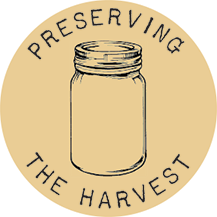
Edibles are not the only “fruits of our labor” we can preserve. Four thousand years ago, dried flowers, each chosen for a specific symbolic meaning, were presented in Egyptian funeral ceremonies. Oshibana, the art of using pressed flowers to create a picture, dates back to 16th century Japan. Modern preservation techniques include the use of silica gel, freeze drying, and molecular sieve, a material that absorbs water to dehydrate the plant.
According to floranext.com, displaying dried flowers is popular again. Arrangements and wreaths, as well as framed or shadow-box art created with dried and pressed flora are hot décor items. As a fresh spin on this trend, clear cell phone cases that can display pressed flowers are popular among Millennials.
MATERIALS
2 equal size pieces of wood
4 each: 1/4 inch carriage bolts at least 2 inches long, washers, wing nuts Cardboard
Watercolor paper (or white paper)
Paint or stain (optional)
Flowers and leaves
TOOLS
Saw (optional)
Pencil
Ruler or t-square
Clamps or painter’s tape
Drill with 1/4 and 5/16 inch bits
Sandpaper
X-acto knife
Screwdriver

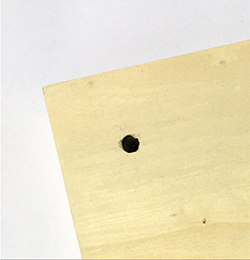

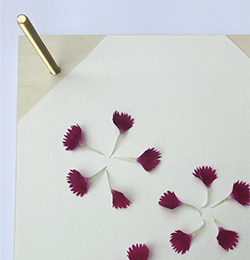
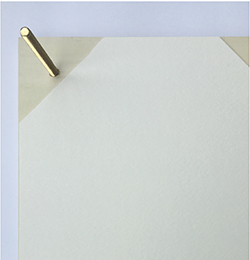

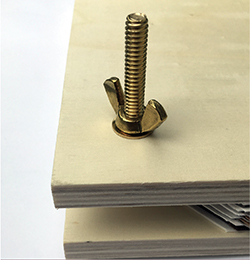
INSTRUCTIONS
- Cut wood to desired size (your local hardware store may offer this service) or use pre-cut pieces—I found pre-sanded 8×10 inch plywood boards in a local craft store.
- Stack both pieces of wood, then clamp or tape together. With pencil, make a mark on top board in each corner, 1 inch from each edge.
- With 1/4 inch bit, drill a hole through both boards in each corner where marked.
- Remove clamps or tape, then set bottom board aside. On top board only, use drill with 5/16 inch bit to enlarge the 1/4 inch holes.
- Use sandpaper to smooth off any rough edges on top and bottom boards.
- If you wish to paint or stain your project, do so at this time. Let dry according to material instruction.
- Use an X-acto knife to cut multiple cardboard pieces about ¼ inch shorter in length and width than your boards. Repeat with watercolor paper. Each layer consists of two pieces of paper, then a piece of cardboard is placed between the layers. For example, six layers requires 12 pieces of paper and five pieces of cardboard.
- Use x-acto knife to notch all corners of each piece of paper and cardboard to fit inside bolts.
- Use screwdriver to afix bolts to bottom board until heads are snug.
- Lay a piece of paper on bottom board, then add plant material. Lay a second piece of paper on top of plant material followed by a piece of cardboard. Repeat the paper, plants, paper, cardboard pattern. The final paper layer will not need a piece of cardboard on top.
- Slide the top board onto the bolts, then add a washer to each bolt. Thread a wing nut onto each bolt and tighten evenly to create uniform pressure.
- Leave press undisturbed for at least 30 days before removing and using pressed material.
PRESSING TIPS
– Collect plant material on dry days after mid-morning when dew has evaporated, and place in press before they begin to wilt.
– When placing plant material, keep items from overlapping, otherwise when they dry they will be stuck together permanently.
DESIGNER IDEA
I decided to spruce up my press and display it when not serving its true purpose. Some stain and a piece of botanical scrapbook paper transformed this tool into a pretty addition to my living room décor.

Cathy Monrad is the graphic designer and garden crafter for the Upstate Gardeners’ Journal.
Views: 0






